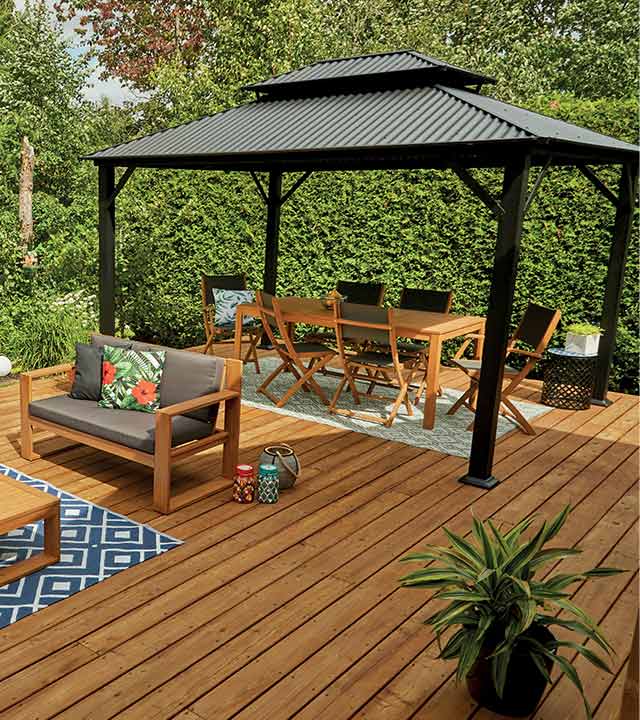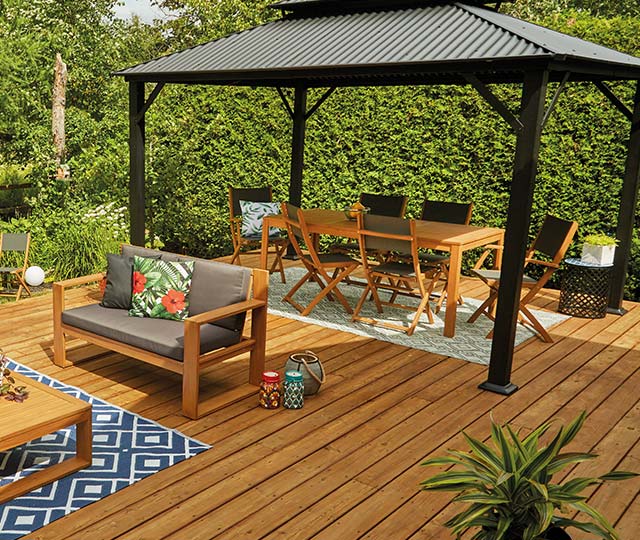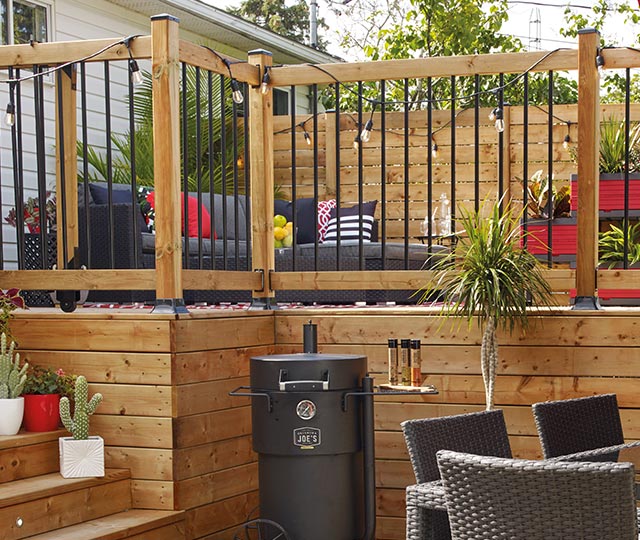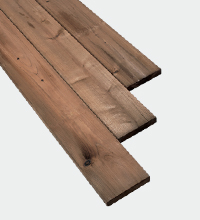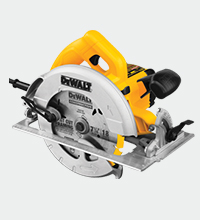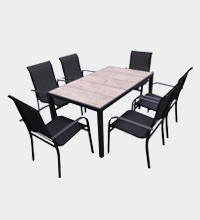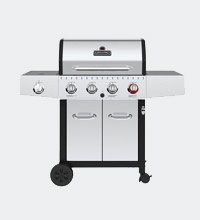The deck is often an extension of the house. But for this extension to be practical and comfortable, it is important to plan it well so that it meets your family's needs.
Before embarking on your plans, ask yourself about the different functions your future deck will have to perform. Do you want your patio to be intimate and protect you from outside eyes? Do you need a bar area or a barbecue area? Do you want to add a garden area?
By specifying your needs, you can then focus on the technical questions.
Deck size impacts comfort
To work out how much deck area you need, it is recommended to calculate a minimum of 25 square feet per person and allow at least 16 feet in length. If you want to have a table and chairs, you will need a traffic-free space of at least 6 ft. x 6 ft. And if you have the space, a length of at least 16 feet is optimal.
Don't forget to plan all areas of your deck (cooking, bar, dining, Kids' playground, etc.). Adding one or more landings (even small ones) will break up the space and facilitate the division of your areas.
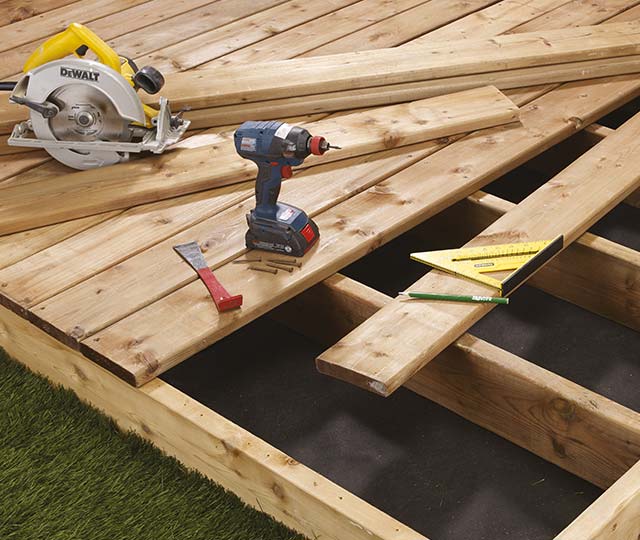

Choice of materials
The materials you choose depend primarily on your budget. Then, think about the durability of your deck and how much time you want to spend maintaining it.
There are a variety of materials available, and while there is a lot of debate on wood and its maintenance, it remains an environmentally friendly and traditional choice and one that do-it-yourselfers find the easiest and most accessible option to work with.
Composite wood is also a great option. If you follow the product data sheet properly and install it correctly, it is durable and is a good long-term investment.
With all these types of materials, mosaic, diagonal, or parallel installation is possible. Have fun with it!
Treated wood
Feature
Treated wood is resistant and durable, especially if maintained during the first year. It can be painted or stained, otherwise it is recommended that a finishing product be applied. Each cut should also be protected with an appropriate sealant. While it requires less maintenance than natural wood, it still needs some of your time. It’s a pleasure to work with for any DIY-lover who has the right tools.
Cost
Increasing
Cedar
Feature
Cedar has a distinct smell and a natural oil that protects it against mould and insects. It holds up well to all types of weather, but requires regular maintenance. To maintain the wood’s condition, clean it and apply a natural oil in spring and fall.
Cost
Increasing
Composite
Feature
Composite offers excellent resistance to moisture, rot, termites, fungi and insects. It does not warp or split. It looks like natural wood and is available in many colours. It is durable and requires little to no maintenance. The boards are non-slip and stay cool to the touch even in direct sunlight. However, it must be properly installed. Read the technical data sheet thoroughly.
Cost
More expensive but very durable.
Permits, plan & budget
Permits
You may need a building permit. It is essential you get informed on current construction regulations through your local municipality. For example, you need to know the regulatory height for your deck, whether there is a distance to be respected from your neighbour’s boundary or what materials can and cannot be used.
Plan
It's time to draw up a scale plan. You must consider the size of your land, the type of soil, the structure and the foundation. Is it on the ground or high up? Based on the results, establish the total size of the deck. If there are different levels, calculate them. At all times, remember to preserve the architecture of your home and to respect the outside environment.
Budget
You must also work out the budget for the deck. To make sure your budget is accurate, refer directly to your plan. Make a complete list of materials, hardware, accessories and everything you need for the foundation. Don’t forget to account for finishing (stain, paint, brushes and rollers). This list will also help you when it's time to go to the hardware store! You could also create a job list to see if the time it takes to complete the work meets your expectations. Foundation work comes first, followed by the cutting of materials, assembly and finishing.
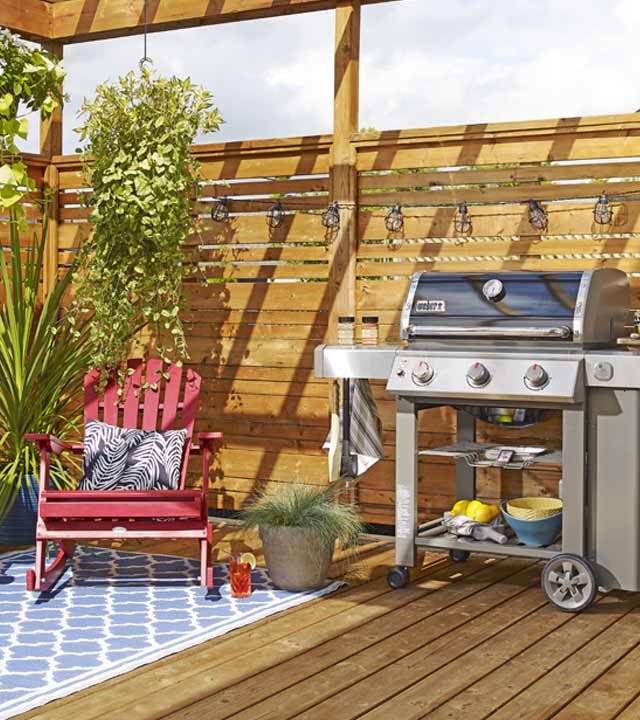
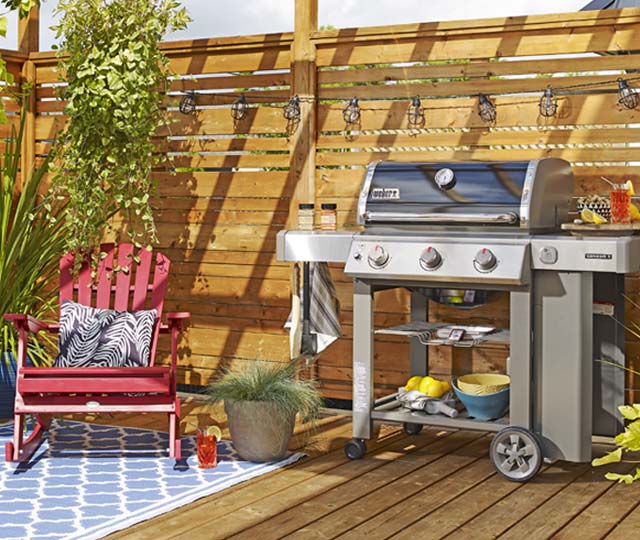
Avoid buying duplicates
Make an inventory of what you already have (furniture, accessories and objects) and write down what you are missing to make the area ergonomic, practical and comfortable: cushions, lighting, a BBQ, a patio heater, a fountain, mats, etc.
Make a detailed list so you don’t forget anything and add it to your budget.
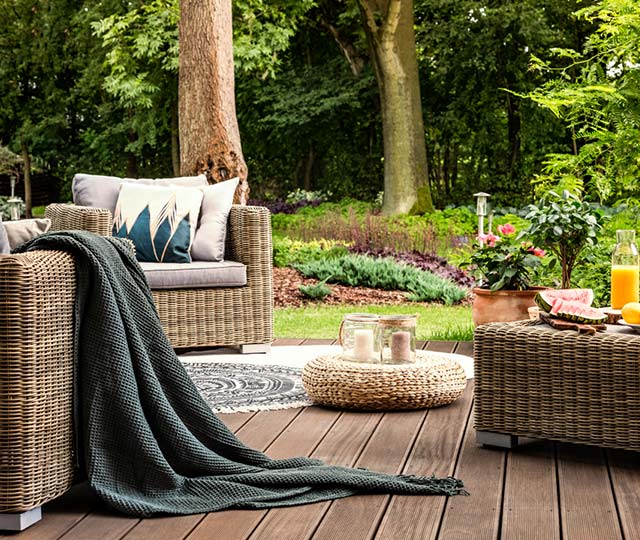

Who will do the work?
A deck’s lifespan usually depends on two main factors: the choice of materials and a sound installation that meets best practices.
If you do not have the skills or the motivation to complete your patio project, feel free to ask our BMR Reno Squad for a quote. Our team will be able to understand what you need and request quotes from several trusted contractors in your area.
Fondations
They must be well designed and, above all, well executed. There are various options: concrete pillars with or without footings, concrete support blocks, piles or foundation screws. For a sturdy, durable, elevated deck to be able to support the desired load-bearing capacity, the key is for it to be anchored properly in the ground. The strongest foundations are concrete columns or piles screwed into the ground. To protect them from ground freeze, the legs of the foundation must extend at least 54 inches in depth depending on the region.
For a ground-level wood construction, make sure that there is sufficient air flow and that moisture is not trapped. Well-calculated supports on concrete blocks, a membrane and well-compacted gravel are the base for a lasting installation.
Soil can be covered by pavers or bricks. Plan to lay up to six inches of crushed, compacted stone to drain the soil effectively. These materials that are installed on sand and assembled without mortar can withstand ground heave.
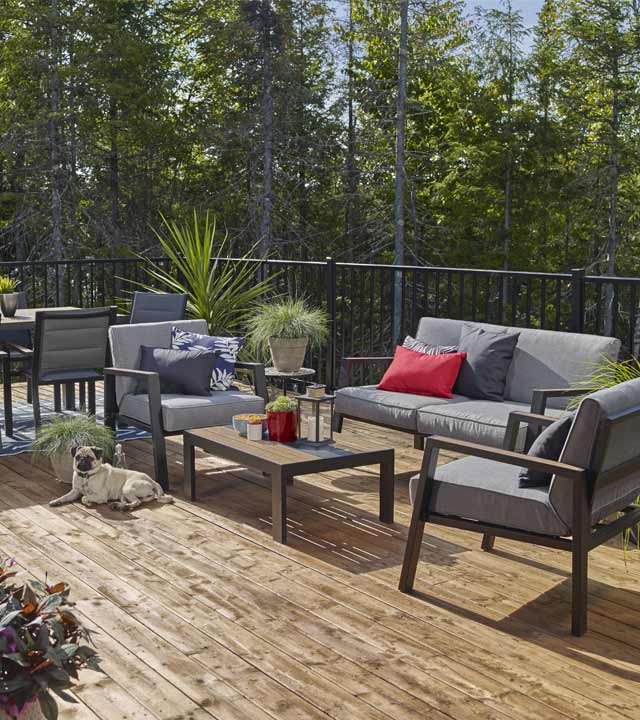
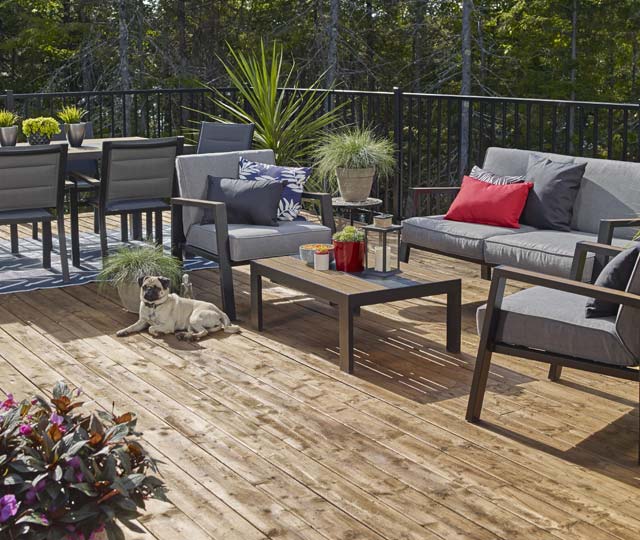
Structure
If you are working on your own deck, make sure that you have the basic manual skills needed, that you work safely and that you avoid wasting materials unnecessarily. Using high-performance tools and well-sharpened blades is essential in getting the job done right.
For a wood deck offering optimal durability and safety, be sure to use specially coated wood screws or, ideally, stainless steel screws that don’t rust. You can also opt for anchors that are installed beneath the deck. They are completely hidden from above. Anchor systems make fewer holes in the wood, which extends its life. Feel free to ask your BMR dealer for advice.
And finally, there are many ways to build a deck and a vast choice of materials but the end goal always remains the same—to enjoy life outdoors.
